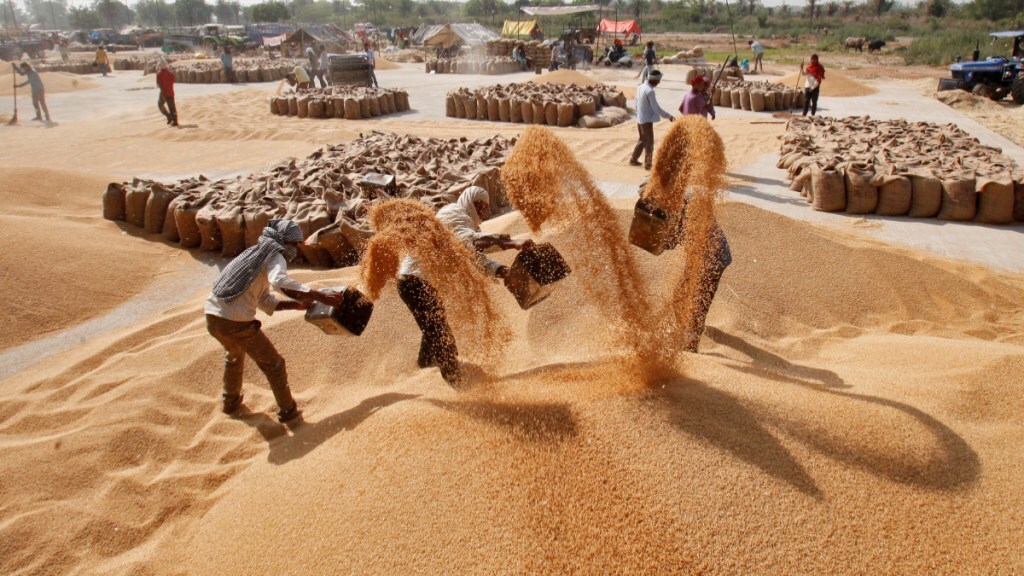For the second year in a row, heat waves are expected to hit the country’s wheat output, despite area under the key rabi crop scaling new highs.
The India Meteorological Department (IMD) on Tuesday said for the first time in the current season, higher day temperature prevailing in some parts of the country – maximum temperatures are above normal by 3-5 degree in some regions – would not recede soon and could lead to an adverse effect on the standing wheat crop, which is approaching the temperature-sensitive reproductive growth period.
On Monday, private weather tracker Skymet had said that March could be hotter than normal, adding that “persistent dry and hot weather conditions” would have an adverse effect on rabi crops in general and the yield of wheat over the northern and central parts of the country in particular.
The forecasts have raised concerns over the wheat stock position, which is seen to be only marginally above the buffer by April and dent the prospects of the review of the ban on export of the grain imposed in May. Given that cereal inflation is one of the key drivers of the consumer price index (CPI), which is keenly watched by the monetary authority under the flexible inflation-targeting framework, any dip in the rabi wheat production or the quality of these staple grains could make it that much more difficult for it to curb the sticky generalised price pressures in the economy.
On Monday, the agriculture ministry set up a committee to monitor the impact of hot and dry weather conditions on standing wheat crops.
“High temperature during flowering and maturing period (of wheat crop) leads to loss in yield. There could be similar impact on other standing crops and horticulture,” the IMD said. It also issued an advisory to wheat farmers asking to provide irrigation if the crop appears to be under stress. “To reduce the impact of higher temperature, add mulch material in the space between two rows of vegetable crops for conservation of soil moisture and maintaining the soil temperature,” the IMD said. It also said the temperature levels “are very likely to be above normal by 3-5 degree celsius” in northwest, central and west India over the next five days.
Last week, Skymet had stated that the top five wheat producing states — Uttar Pradesh, Madhya Pradesh, Punjab, Haryana and Rajasthan — were witnessing unusual spike in the mercury levels. The standing wheat crop at this stage requires conducive weather conditions, preferably cooler than normal temperatures.
For the current crop year (July 2022 -June2023), the government has estimated a record wheat harvest of 112.18 million tonne (MT). Area under wheat has risen by 0.13 million hectare (mh) to 34.32 mh in current crop year from the year-ago period.
In the 2021-22 crop year, the agriculture ministry had initially predicted wheat production at 111.32 MT which was later revised downward to 107.74 MT because heatwaves in March impacted the crop. Trade sources, however, pegged the output at much lower levels.
The crop is sown in October and November while harvesting takes place between end of March till May. Key rabi crops include wheat, mustard and gram (chana).
Inflation in wheat prices rose by a sharp 25.05% on year in January, pushing up retail food inflation to 5.94% from 4.19% reported in the previous month. Due to lower production and higher global demand, wheat procurement in the 2022-23 marketing season fell by more than 56.6% to only 18.8 MT (target was 44 MT) against 43.3 MT purchased from the farmers in the previous year.


